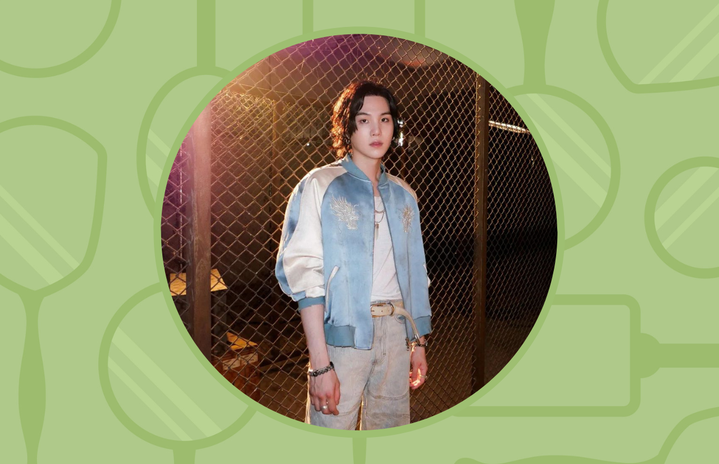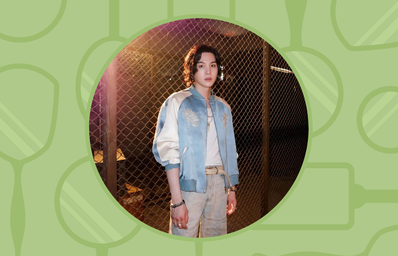ARMYs, welcome to a new era of Agust D: Suga’s long-awaited solo album is finally here, completing his trilogy of albums under the pseudonym Agust D. D-DAY, which dropped on April 21 (just five days before Suga starts his solo world tour) is already garnering praise for showcasing Suga’s lyricism and vulnerability, but one track stands out in particular: The “AMYGDALA” lyrics have caught ARMYs’ attention for revealing a new side of Suga’s past and family life.
“AMYGDALA” is the fourth song on D-DAY, and shifts the tone of the album, if you’re listening in order (as all listeners should)! Unlike its more upbeat and explosive predecessors “D-Day,” the title track “Haegeum,” and “HUH?!” which features Suga’s BTS bandmate J-Hope, “AMYGDALA” immediately has a moodier sound. It also starts off with Suga’s singing voice rather than a rap verse. That doesn’t mean Suga isn’t still spitting fire — in fact, his rap verses are perhaps even more cutting than some of the things he says to call people out on “Haegeum” and “HUH?!” but this time around, he’s getting more introspective and diving back into his memories. Need an explanation of the meaning of Agust D’s “AMYGDALA” lyrics in English? I’ve got you.
Wait, what even is an amygdala?
To understand the meaning behind the song, you may need a quick neuroscience lesson on the title first. The amygdala is an almond-shaped cluster of nuclei in the brain — you actually have two amygdalae, one in each hemisphere of your brain, according to Encyclopedia Britannica. The name comes from Latin and translates to “almond,” a reference to its shape. The amygdala is a part of the limbic system, which in simplest terms is responsible for handling our behavioral and emotional responses. The colloquial understanding of the amygdala is that it plays a role in helping us process fear. More specifically, it engages our fight-or-flight response when faced with something threatening — the phenomenon is also called an “amygdala hijack,” according to Healthline.
Its full range of functions are also a bit more complex than that. The amygdala helps us form emotional responses of fear, yes, but also anger, pleasure, and anxiety, according to the Queensland Brain Institute. It also impacts our memories by attaching emotional content to them, making them stronger. It can help us form positive and negative memories.
For Suga’s purposes, considering he’s not a neuroscientist, it’s probably safe to assume he’s operating under the colloquial definition of the amygdala, which relates to how we process fear and engage our fight-or-flight response. But OK, enough science. How does the title relate to the rest of the song?
Suga raps about his parents and the hardships he and his family endured.
Just a heads up — you might cry.
Suga’s rap verses detail some of the hardships he and his parents faced in the past. For example, the first verse opens with, “1993 / The month I was born / My mother’s heart surgery / A lot of things happened / What’s so eventful / I can’t even remember / Let’s take them all out one by one.” This process of “taking out” painful memories and evaluating them relates to the amygdala’s function in the brain, and connects to the idea of “traveling to my memories” that Suga repeats in the intro and pre-chorus.
Of course, we don’t know all the information about why Suga’s mother needed heart surgery — nor are we really entitled to know as fans — but the main point to take away here is that he’s thinking about memories that are painful or fear-inducing, and hoping to “erase them one by one,” as he says in the pre-chorus.
This continues in the second verse, in which Suga is older and has more painful memories to revisit: “Uh-uh, in my ears, I hear the sound of my mom’s heart clock / Uh-uh, the news of my accident that I couldn’t tell you / And the phone that rang during my schedule and told me of my father’s liver cancer.” The “accident” Suga references here is likely the shoulder injury that he’s been dealing with for years. ARMYs will know that in 2012 (a year before BTS’ debut), Suga was working as a delivery boy and was hit by a car, resulting in years of pain, and even a shoulder surgery in 2020.
Suga has rapped about his issues with his shoulder before in “The Last,” a song on his 2016 mixtape Agust D, which was the first part of his Agust D trilogy. But “AMYGDALA” offers the new and devastating fact that Suga didn’t tell his parents about his accident at the time, instead choosing to feel the pain alone. He continues by reevaluating that decision, rapping, “Hoping that they were the best choices / (Woah-oh) Because everything has passed / So, is this numerous pain all for me?”
Suga is speaking directly to his amygdala throughout the song.
Suga starts the intro and pre-chorus with the repeated line, “I don’t know your name.” It’s up to interpretation who “you” is here, but a lot of fans have pointed out he could be speaking to his past self whose traumatic memories he’s revisiting, or his amygdala which is processing his emotions. Similarly, the line is produced to have an audible echo at certain points, which some ARMYs connected to the feeling of talking to yourself inside your own head.
Suga gets more overt in the chorus, singing, “My amygdala / Save me, hurry up and get me out of here.” This is likely a reference to the fight-or-flight response I mentioned earlier. He’s begging his amygdala to not only save him from situations that trigger fear or anxiety, but also to keep away the painful memories associated with those moments in his life.
Suga is ultimately trying to guide his amygdala to help him process and forget: “These things I didn’t want to happen / Things out of my control / Let’s put it in one by one,” he says. Of course, that’s not how the amygdala works, so it’s kind of a futile exercise, but maybe that’s the point; Suga can’t escape his past, and instead must live with it.
Despite the sadness depicted in “AMYGDALA,” Suga still has hope.
The line that may resonate the most with fans is more hopeful than the rest of the song. At the end of the second verse, he says, “The never-ending trials weren’t able to kill me / And I bloom a lotus flower again.” Lotus flowers have long been a symbol of resilience: They are able to grow in muddy waters (a metaphor for difficult circumstances) and rise above, still blooming and beautiful. So even though Suga doesn’t want to have to face the difficulties of his past, he also knows that he can — and even without being able to erase the pain, he’s still able to thrive.
We know that “AMYGDALA” will be getting its own music video since Suga announced it in a video that played right before the YouTube premiere of the “Haegeum” music video on April 21. He suggested that fans watch the music videos for “Daechwita” (the lead single off of his second mixtape D-2 in 2020), “Haegeum,” and “AMYGDALA” in one sitting, meaning there might be a narrative link between the three stories. Considering the music videos for both “Daechwita” and “Haegeum” dealt with multiple versions of Suga/Agust D, it’s possible that we could see his past self appear in “AMYGDALA.” But as we wait to find out, I’m going to keep listening to “AMYGDALA” and the rest of D-DAY.


